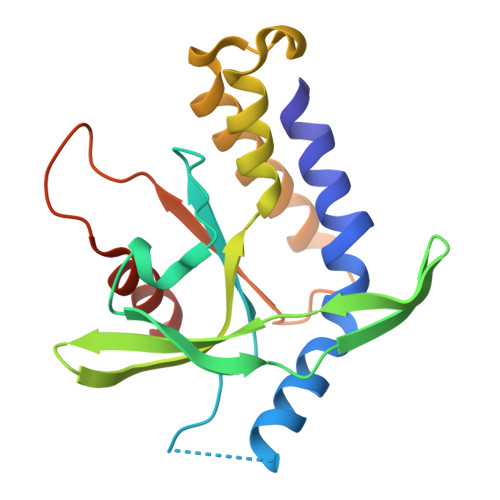Discovery of a non-nucleotide stimulator of interferon genes (STING) agonist with systemic antitumor effect.
Wang, X., Zhan, Z., Wang, Z., Zhang, Y., Zhao, K., Li, H., Zhou, X., Guo, Y., Fan, F., Ding, J., Geng, M., Yu, X., Duan, W., Xie, Z.(2025) MedComm (2020) 6: e70001-e70001
- PubMed: 39712456
- DOI: https://doi.org/10.1002/mco2.70001
- Primary Citation of Related Structures:
9IJN - PubMed Abstract:
Agonists of the stimulator of interferon genes (STING) pathway are increasingly being recognized as a promising new approach in the treatment of cancer. Although progress in clinical trials for STING agonists in antitumor applications has been slow, there is still an urgent need for developing new potent STING agonists with versatile potential applications. Herein, we developed and identified a non-nucleotide STING agonist called DW18343. DW18343 showed robust activation across different STING isoforms. Crystallography analysis revealed that DW18343 binds more deeply into the ligand binding domain (LBD) pocket of STING-H232 compared to other agonists such as MSA-2, SR-717, or cGAMP, which likely contributes to its high potency. DW18343 triggered downstream p-TBK1/p-IRF3 signaling, leading to the production of multiple cytokines. Additionally, DW18343 displayed broad and long-lasting antitumor effects in various syngeneic mouse tumor models, whether administered locally or systemically. Moreover, DW18343 induced immune memory to combat the growth of rechallenged tumors. Finally, DW18343 was shown to be an activator of both the innate and adaptive antitumor immunity in tumor tissue, potentially explaining its strong antitumor effects in vivo. In conclusion, DW18343 serves as a novel non-nucleotide STING agonist with systemic antitumor effect through the activation of antitumor immunity.
Organizational Affiliation:
State Key Laboratory of Drug Research Shanghai Institute of Materia Medica Chinese Academy of Sciences Shanghai China.

















